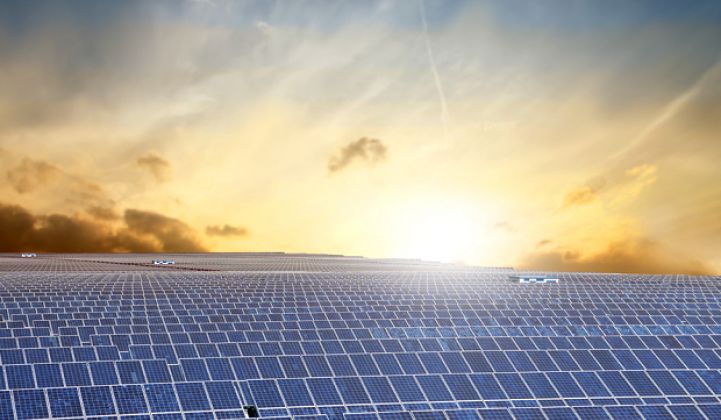America's solar industry had its toughest quarter in two years.
Faced with political uncertainty, rising equipment prices, a slowdown in maturing markets, and a churn within residential installer rankings, deployments in the third quarter of the year are down on both a quarterly and annual basis.
According to GTM Research and the Solar Energy Industries Association’s latest U.S. Solar Market Insight report, 2,031 megawatts of PV were installed in the U.S. in the third quarter of the year, resulting in the market’s smallest quarter in two years. (For historical context -- Q3 deployments were still 100 megawatts more than the entire year of installations in 2011.)
And even with the slowdown, solar PV added 25 percent of new capacity additions to America's grid in the first three quarters of the year -- coming in second to natural gas.
U.S. Quarterly PV Installations, Q1 2012-Q3 2017

Source: GTM Research / SEIA U.S. Solar Market Insight, Q4 2017
Two of the three market segments tracked by GTM Research and SEIA were down on the quarter and on the year; however, the non-residential segment was the lone standout.
The U.S. installed 481 megawatts of non-residential PV in the third quarter, representing growth of 22 percent year-over-year.
According to GTM Research solar analyst Austin Perea: “Regulatory demand pull-in was the primary market mover in Q3, as developers in California, Massachusetts and New York rushed to install projects to qualify for more favorable time-of-use periods, expiring incentive programs and grandfathering provisions. Meanwhile, non-residential solar in Minnesota experienced its largest quarter ever as the build-out of Xcel Energy’s robust community solar pipeline comes on-line.”
With an unpredictable administration, a sweeping tax bill, and the threat of tariffs, it's been one of the busiest years in recent memory. These factors are all swirling around the industry, causing some doubts about the future.
Notable trends from the report include:
-
In Q3 2017, the U.S. market installed 2,031 megawatts of solar PV, a 51 percent decrease year-over-year.
-
Through the first three quarters of 2017, 25 percent of all new electric generating capacity brought on-line in the U.S. has come from solar, ranking second only to natural gas.
-
The U.S. International Trade Commission has voted to impose trade remedies on foreign-manufactured cells and modules, though it has suggested levels well below what Suniva and SolarWorld initially requested. The U.S. ITC sent recommendations to President Trump, and he now has until January 26 to decide the outcome of the case.
-
The residential PV sector fell 10 percent quarter-over-quarter. Declining growth is driven by weakness in California and major Northeast markets, which continue to feel the impact of pull-back from national providers.
-
The non-residential sector grew 22 percent year-over-year, primarily driven by regulatory demand pull-in from looming policy deadlines in California and the Northeast, in addition to the continued build-out of a robust community solar pipeline in Minnesota.
-
Voluntary procurement continues to be the primary driver of new utility PV procurement, accounting for 57 percent of new procurement through Q3.
-
Q3 2017 saw price increases across all market segments for the first time since this report series’ inception, stemming from increases in module costs due to a global shortage of Tier 1 module supply and the Section 201 petition.
-
GTM Research forecasts that 11.8 gigawatts of new PV installations will come on-line in 2017.
- Total installed U.S. solar PV capacity is expected to double over the next five years. By 2022, nearly 15 gigawatts of solar PV capacity will be installed annually.
Want to read the full report? Access it here.




